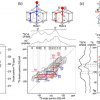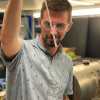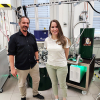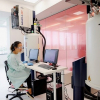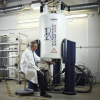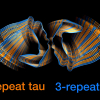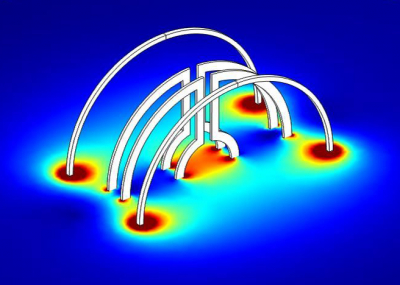
The physical effect of nuclear magnetic resonance (NMR) is used to study molecular properties of matter. The specimen is located in a high constant magnetic field and irradiated with a high-frequency alternating magnetic field. Both magnetic resonance tomography (MRT) and NMR spectroscopy, are based on nuclear magnetic resonance. However, research has to cope with the challenge of constantly improving the unfavorable signal-noise ratio and, thus, increasing the sensitivity of NMR measurements. “A high sensitivity is indispensable in particular when applying mass- and volume-limited methods or when a high spatial resolution is required”, Professor Jan Gerrit Korvink, Director of the Institute of Microstructure Technology (IMT) of Karlsruhe Institute of Technology (KIT) explains.
In NMR measurements on small samples, miniaturised high-frequency coils proved effective for the generation and reception of the alternating magnetic field. For mobile applications and further miniaturisation, an international team of researchers has now developed a new method to enhance sensitivity in very small spaces. They use magnetic lenses, so-called Lenz lenses, to focus the magnetic flux of a macroscopic high-frequency coil on a smaller volume and to locally enhance sensitivity. With these lenses named after physicist Emil Lenz, who published the law on changing magnetic flux, magnetic flux of the alternating field cannot only be focused, but also diverted or transformed. In this respect, the effect of these lenses can be compared with that of optical lenses on light beams. Change of the magnetic field induces current in the Lenz lenses made of metal plates or wires in symmetric or asymmetric arrangement. The shape of the lenses guides the induced currents such that the magnetic field is focused.
With Lenz lenses, sensitivity of measurements in very small spaces, into which conventional NMR systems do not fit, can be increased significantly. Moreover, the lenses work at any field strength. Among others, medical applications can benefit from the use of Lenz lenses, Korvink says: “As the Lenz lenses are not wired, they are particularly suited for implants”. Application might be feasible in brain implants to observe healing of the tissue over longer terms with high resolution or on plasters for the observation of skin cancer. Currently, scientists are exploring further applications, among others in electrical engineering.
Professor Jan Gerrit Korvink, together with Dr Nils Spengler, Professor Ulrike Wallrabe, Dr Peter T. While and Markus V. Meissner, experimentally demonstrated the use of Lenz lenses in NMR measurements and mathematically formulated the underlying principle. The results of the scientists’ work has been reported in the PLOS ONE.


